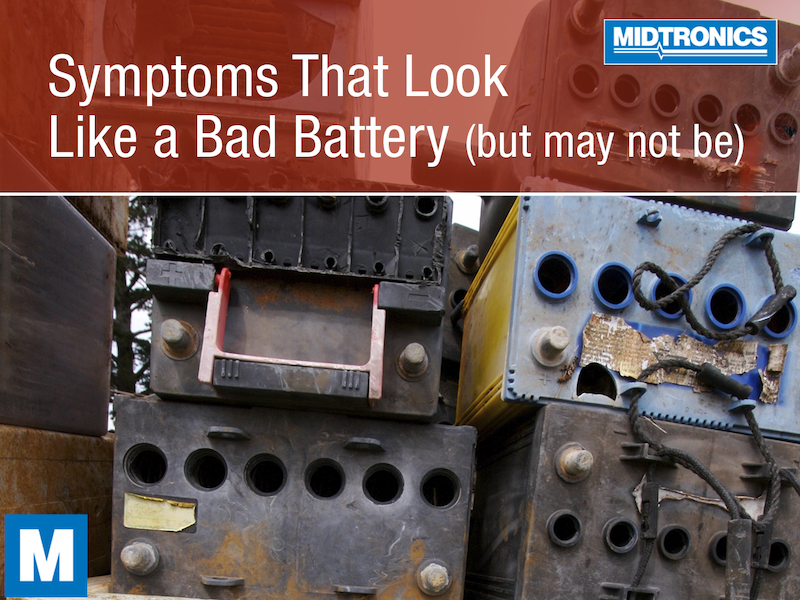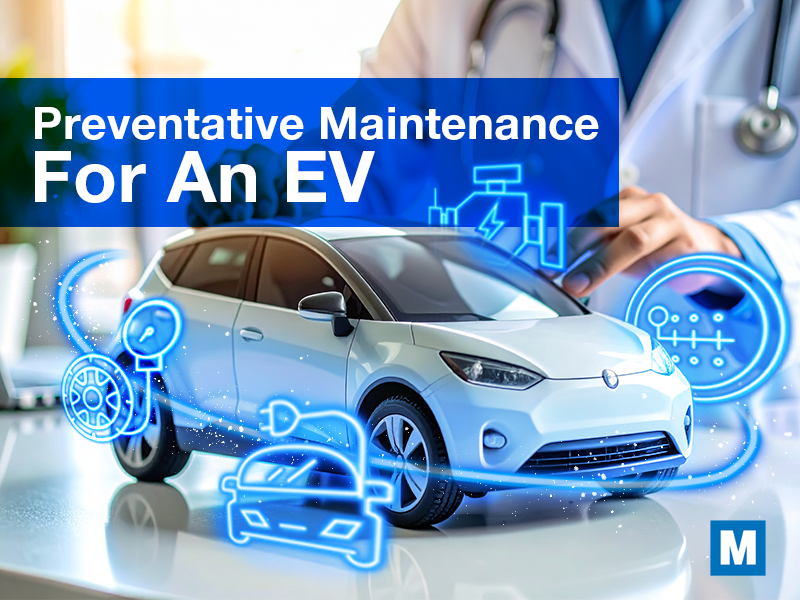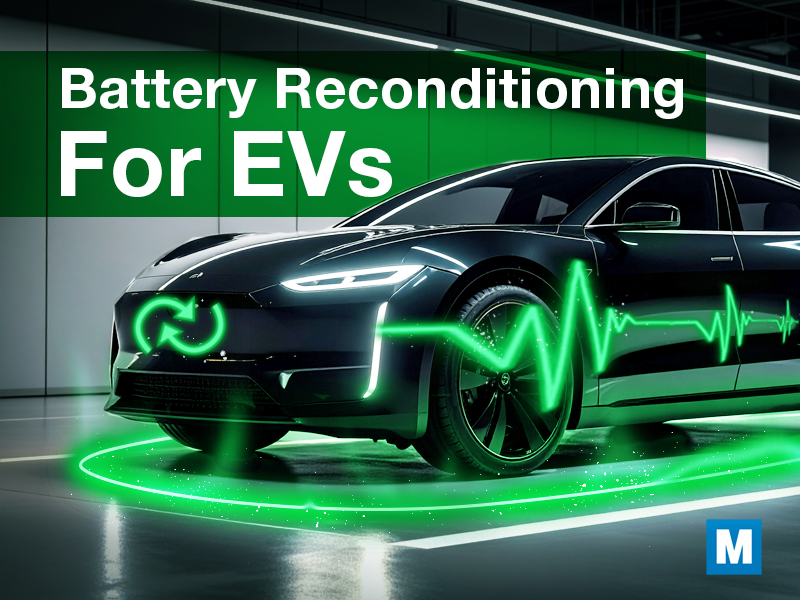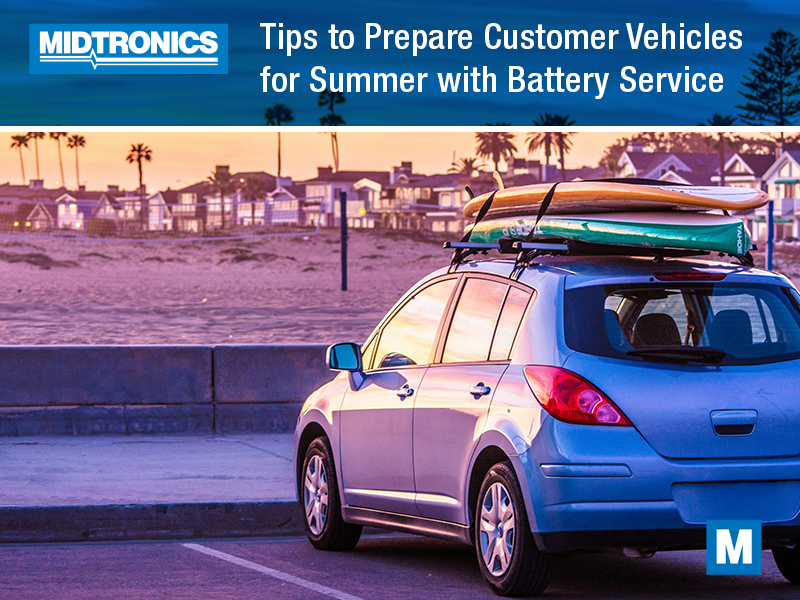The average car battery lasts between three and five years. But on new cars, that’s usually the same time frame when the factory warranty expires, and problems can begin with other systems. And while some issues are clearly something altogether unique and unrelated, certain concerns can look like it’s a battery at the end of its life, even if the battery is still good.
Replacing an aged battery might seem like the right thing to try as a repair that only costs a few hundred dollars, but failing to get to the bottom of the issue before installing a new battery can leave the driver frustrated with the persistent, recurring symptoms. It’s best not to assume that these common signs are the battery without running a comprehensive diagnostic test first.
Battery light is on
A common assumption among car owners who choose DIFM or “do it for me” services is that when the battery light is on, the battery is failing. That’s reinforced with other symptoms that slowly appear thereafter, up to and including a dead battery. But the truth is that the battery warning light on the dashboard is seldom an indicator that the battery is failing at all.
When the battery light is on while the engine is running, it’s an indication that the charging system isn’t functioning as it should. The battery isn’t receiving a sufficient charge to replenish it, and in most cases, the vehicle’s systems are running off the reserve power in the battery itself. Eventually, the battery will become depleted and die, but that’s not the root cause of the problem.
Slow cranking starter
When the vehicle owner turns the key to crank the engine over, a slow cranking condition can be concerning. It’s often associated with a bad battery that simply doesn’t have the necessary amperage to crank the starter as fast as it previously did. That might be true in some instances, but in others, it’s not the problem at all.
A slow cranking starter can be due to anything between the starter and the battery, and it’s sometimes difficult to trace. There could be a voltage drop in the main power cable that means the starter doesn’t get enough current to crank as strong as it should. It may be corrosion on the terminals, and it could be the starter has corrosion or wear inside. There could also be a parasitic current draw draining the battery into a discharged state.
Before replacing the battery to try fixing a slow cranking condition, it’s a good idea to test not just the battery but the charging and starting system. It can avoid throwing parts at a problem that aren’t necessary.
Automatic start-stop isn’t working
For newer vehicles equipped with auto start-stop technology, it can seem like the battery isn’t charging to full capacity if it doesn’t cycle when you come to a stop. What’s particularly concerning is that it’s often meant to cycle if the battery is over 70%. You might think the battery needs to be changed, but the feature might be working normally and just doesn’t meet the other lesser-known criteria.
If there are accessories plugged in that draw a significant current, especially in a 110v outlet, it can prevent auto start-stop from cycling. As well, some vehicles won’t cycle if the engine hasn’t reached operating temperature or the HVAC controls are set above a certain level, or if features like 4WD are engaged.
It is possible that a weak battery is causing the concern, but it’s not the only reason auto start-stop isn’t working.
Rotten egg smell under the hood
A rotten egg smell when you pop the hood can indicate that it is producing hydrogen gas as a byproduct of charging or normal operation. It vents into the atmosphere, preventing the battery case from bloating. This is a common issue with lead-acid batteries, and it is generally not a cause for concern as long as the battery is functioning properly. However, if the smell is very strong or you notice any other problems with your car, it’s a sign the battery is on the way out.
But the sour, off-putting odor doesn’t always mean that it’s the battery that needs attention. Contaminants in your fuel or an engine that’s burning too rich can prevent the catalytic converter from neutralizing hydocarbons completely, causing a very similar smell to come from the exhaust. A light breeze can waft it forward from the tailpipe to under your hood, making you think it’s a battery issue.
Engine doesn’t turn over
One common symptom when you have a bad battery is that the engine won’t crank over at all. However, that symptom could be related to other problems too, and installing a new battery either won’t fix anything at all or will only work until it dies.
A range of problems can be the root of an engine that doesn’t crank such as:
- A shift interlock issue
- Loose or corroded wiring
- An ignition switch or cylinder problem
- Faulty starter
- A failed alternator
- Or even a seized engine
- There could also be a parasitic current draw draining the battery into a discharged state.
Of course, it’s possible that the battery is to blame, but diagnosing the problem accurately will ensure efficient, timely repairs without excessive costs.
Rotten egg smell
Batteries give off a rotten egg smell when the sulfuric acid converts to hydrogen sulfide gas and escapes from the case. While it’s an indication of a bad battery, the smell isn’t necessarily coming from the battery.
If the catalytic converter isn’t working efficiently, tailpipe emissions can very much resemble the same odor as a battery that’s overheating and off-gassing. Either way, the smell’s origin should be identified quickly and fixed. One or more of these symptoms could mean a bad battery, but seldom are symptoms exclusive. That’s why a comprehensive battery test is so important when a battery is suspected to be the problem. The test results will help reach an accurate diagnosis, and they could also avoid the frustration, embarrassment, and costs associated with replacing parts unnecessarily




